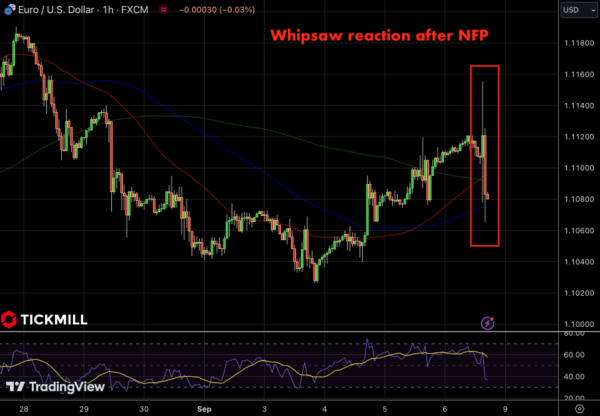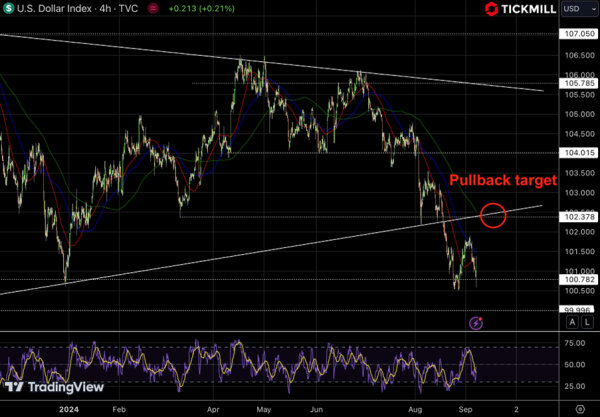US Dollar Holds Steady as Mixed Jobs Data Fuels Uncertainty Ahead of Key Fed Decision
The reaction of the US Dollar Index in light of August’s Nonfarm Payrolls was mixed, providing little cues about implications of the jobs report for the Fed rate cut odds. While the initial data suggested a potential cooling of the US labor market, the underlying signals from the report offered both caution and optimism, setting the stage for strategic market positioning in the coming weeks:

The headline Nonfarm Payrolls figure came in below expectations at 142,000 versus the anticipated 160,000, with July’s revised number also dropping significantly to 89,000. This weaker-than-expected job growth initially caused a dip in the dollar as it suggests a potential slowdown in labor market momentum. However, the jump in Monthly Average Hourly Earnings (+0.4%) and the drop in the unemployment rate (to 4.2%) complicate the narrative. These data points indicate that while fewer jobs are being created, wages are still rising, and unemployment is edging lower. This could imply a tight labor market, which in turn may support consumer spending and economic activity despite the softer payrolls figure.
The mixed signals from the report suggest that while the immediate reaction may have been dollar-negative, there are undercurrents that could push the USD higher in the medium term. Wage growth, coupled with overtime upticks mentioned in the report, signals that businesses may still be contending with demand pressures. This could support the Federal Reserve’s cautious stance on interest rate cuts.
The Fed’s next move will be crucial for traders. Christopher Waller, a key member of the Federal Reserve’s board, is due to speak soon, and his comments could provide further clarity on whether the Fed will opt for a 25 or 50 basis point (bps) rate cut in September. Currently, the CME FedWatch Tool shows a 59% probability of a 25 bps cut, with a 41% chance for a more aggressive 50 bps reduction.
While the possibility of rate cuts has been gaining traction, it's essential to consider the broader economic backdrop. The fact that wages are rising and unemployment is low suggests that the US economy is not in immediate danger of recession. The Fed might thus opt for a smaller rate cut to maintain flexibility without stoking inflationary pressures. A 50 bps cut could be seen as an overreaction, especially with the risk of reigniting inflation, which has been relatively contained in recent months.
The USD’s flat performance following the jobs report reflects a market in a wait-and-see mode. Equities in Europe and US futures were also subdued, indicating that investors are hesitant to make significant moves until more clarity is provided by Fed officials. Should Waller or other Fed members signal a more dovish stance, we could see increased dollar weakness in the near term, as expectations for deeper cuts build.
On the other hand, if the Fed signals a more measured approach, cutting rates by just 25 bps and indicating a ‘wait-and-see’ strategy for future cuts, the dollar could regain its strength. The US 10-year benchmark rate at 3.75% also hints at this delicate balancing act. If yields stay relatively stable, it would indicate that the market is not expecting aggressive rate cuts, which would support the USD.
From a technical perspective, the DXY is facing significant resistance around the 101.90 level. Recent price action shows that this level has proven difficult to break, with a potential for a 2% rise required to push the index up to the next resistance at 102.40:
